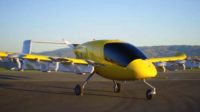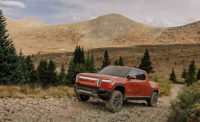WASHINGTON—Engineers at NASA’s Advanced Air Vehicles Program (AAVP) are re-examining a topic that was popular in the 1960s—supersonic commercial flight. They recently conducted a study that claims potential passenger markets exist in about 50 established transoceanic routes that connect cities in North America, Asia and Europe. A separate NASA initiative is the Quesst mission, which is using the X-59 quiet supersonic aircraft to study the potential of overland commercial supersonic flight.
“We conducted similar concept studies over a decade ago at Mach 1.6 to 1.8, and those resulting roadmaps helped guide [our] research efforts since, including those leading to the X-59,” says Lori Ozoroski, project manager for the Commercial Supersonic Technology Project at NASA. “These new studies will both refresh those looks at technology roadmaps and identify additional research needs for a broader high-speed range.”
The AAVP is now moving into the next phase of high-speed travel research, which includes issuing two 12-month contracts to aerospace manufacturers to develop concept designs and technology roadmaps. The roadmaps will explore air travel possibilities, outline risks and challenges, and identify needed technologies to make Mach 2-plus travel a reality.
Boeing is leading the first team, with partners such as GE Aerospace and Rolls-Royce. Northrop Grumman Aeronautics Systems lead the second team with partners such as Boom Supersonic. Each team will examine technology related to airframe, power, propulsion, thermal management and composite materials that can hold up under high-supersonic speeds. They will also create nonproprietary designs for concept vehicles.
“The design concepts and technology roadmaps are really important to have in our hands when the companies are finished,” explains Mary Jo Long-Davis, manager of the Hypersonic Technology Project at NASA. “We are also collectively conscious of the need to account for safety, efficiency, economic and societal considerations. It’s important to innovate responsibly so we return benefits to travelers and do no harm to the environment.”
Long-Davis and Ozoroski have been tasked by NASA’s Aeronautics Research Mission Directorate and the AAVP to develop a high-speed strategy. The conceptual vehicle designs and technology roadmaps are key to developing that strategy. Once the industry engagement phase is completed, NASA and its industry and academic partners will decide whether to continue the research with their own investments.






